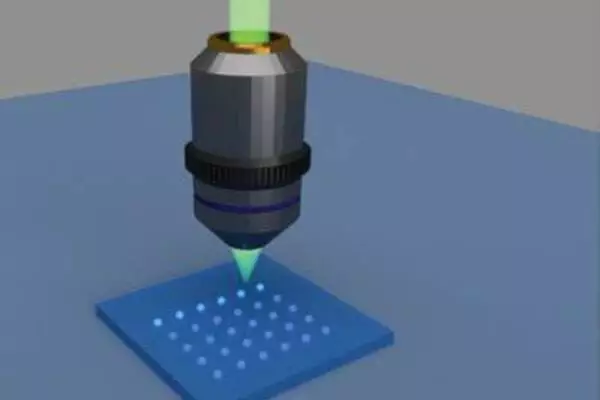Researchers present a novel method for fabricating high-performance ultrafast lasers on nanophotonic chips. The new breakthrough will allow pocket-sized devices to perform detailed GPS-free precision navigation, medical imaging, food safety inspection, and other tasks.
Lasers are essential tools for observing, detecting, and measuring things in nature that the naked eye cannot see. However, the ability to perform these tasks is frequently limited by the requirement to use expensive and large instruments.
Qiushi Guo demonstrates a novel approach for creating high-performance ultrafast lasers on nanophotonic chips in a newly published cover-story paper in the journal Science. His research focuses on miniaturizing mode-lock lasers, which emit a train of ultrashort, coherent light pulses at femtosecond intervals, or one quadrillionth of a second.
Our goal is to revolutionize the field of ultrafast photonics by transforming large lab-based systems into chip-sized ones that can be mass produced and field deployed. Not only do we want to make things smaller, but we also want to make sure that these ultrafast chip-sized lasers perform well. For example, to create meaningful chip-scale systems, we need enough pulse-peak intensity, preferably more than 1 Watt.
Qiushi Guo
Ultrafast mode-locked lasers are critical for unraveling the mysteries of nature’s fastest timescales, such as the formation or breaking of molecular bonds during chemical reactions or light propagation in a turbulent medium. Mode-locked lasers’ high speed, pulse-peak intensity, and broad-spectrum coverage have also enabled a variety of photonics technologies, including optical atomic clocks, biological imaging, and computers that use light to calculate and process data.
Unfortunately, cutting-edge mode-locked lasers are currently expensive, power-hungry tabletop systems that are only suitable for laboratory use.
“Our goal is to revolutionize the field of ultrafast photonics by transforming large lab-based systems into chip-sized ones that can be mass produced and field deployed,” said Guo, a physics professor at the CUNY Graduate Center and a member of the CUNY Advance Science Research Center’s Photonics Initiative. “Not only do we want to make things smaller, but we also want to make sure that these ultrafast chip-sized lasers perform well.” For example, to create meaningful chip-scale systems, we need enough pulse-peak intensity, preferably more than 1 Watt.”

Realizing an effective mode-locked laser on a chip is not a straightforward process, however. Guo’s research leverages an emerging material platform known as thin-film lithium niobate (TFLN). This material enables very efficient shaping and precise control of laser pulses by applying an external radio frequency electrical signal. In their experiments, Guo’s team uniquely combined the high laser gain of III-V semiconductors and the efficient pulse shaping capability of TFLN nanoscale photonic waveguides to demonstrate a laser that can emit a high output peak power of 0.5 Watt.
Aside from its small size, the demonstrated mode-locked laser has many intriguing properties that conventional lasers do not have, with profound implications for future applications. Guo, for example, was able to precisely tune the repetition frequencies of out pulses in a very wide range of 200 MHz by adjusting the laser’s pump current. The research team hopes to enable chip-scale, frequency-stabilized comb sources, which are critical for precision sensing, by leveraging the demonstrated laser’s strong reconfigurability.
Guo’s team will face additional challenges to realize scalable, integrated, ultrafast photonic systems that can be translated for use in portable and handheld devices, but this current demonstration has cleared a major hurdle.
“This achievement paves the way for eventually using cell phones to diagnose eye diseases or analyzing food and environments for things like E. coli and dangerous viruses,” said Guo. “It could also enable futuristic chip-scale atomic clocks, which allows navigation when GPS is compromised or unavailable.”
















